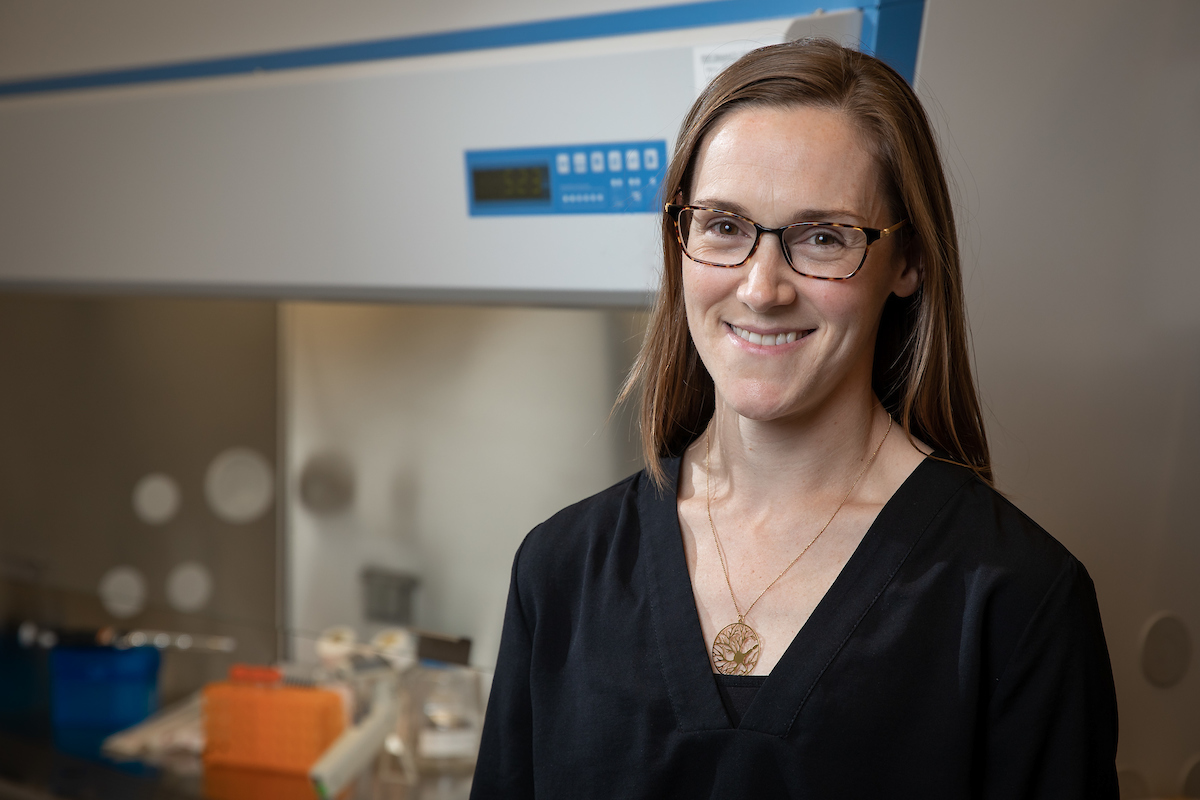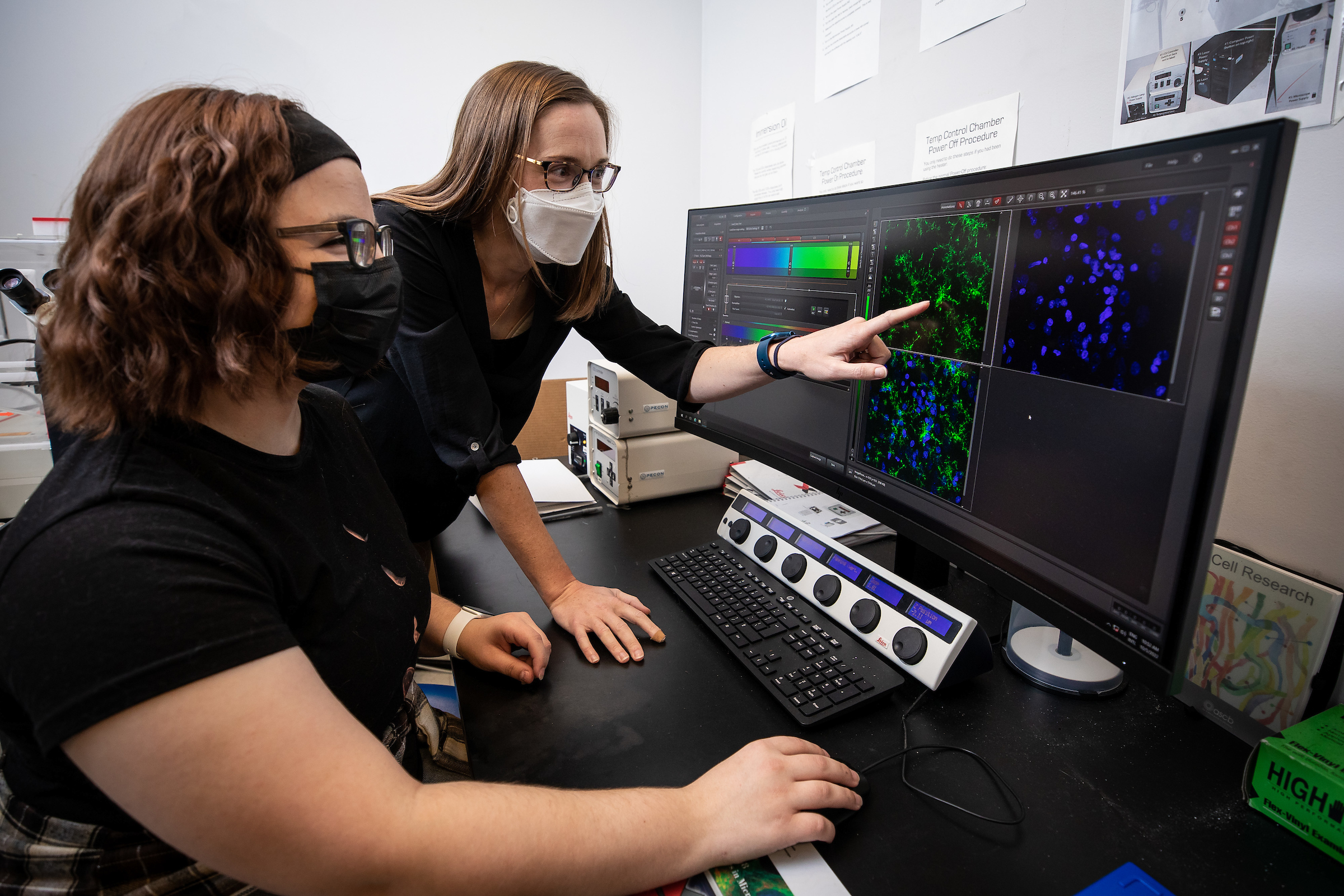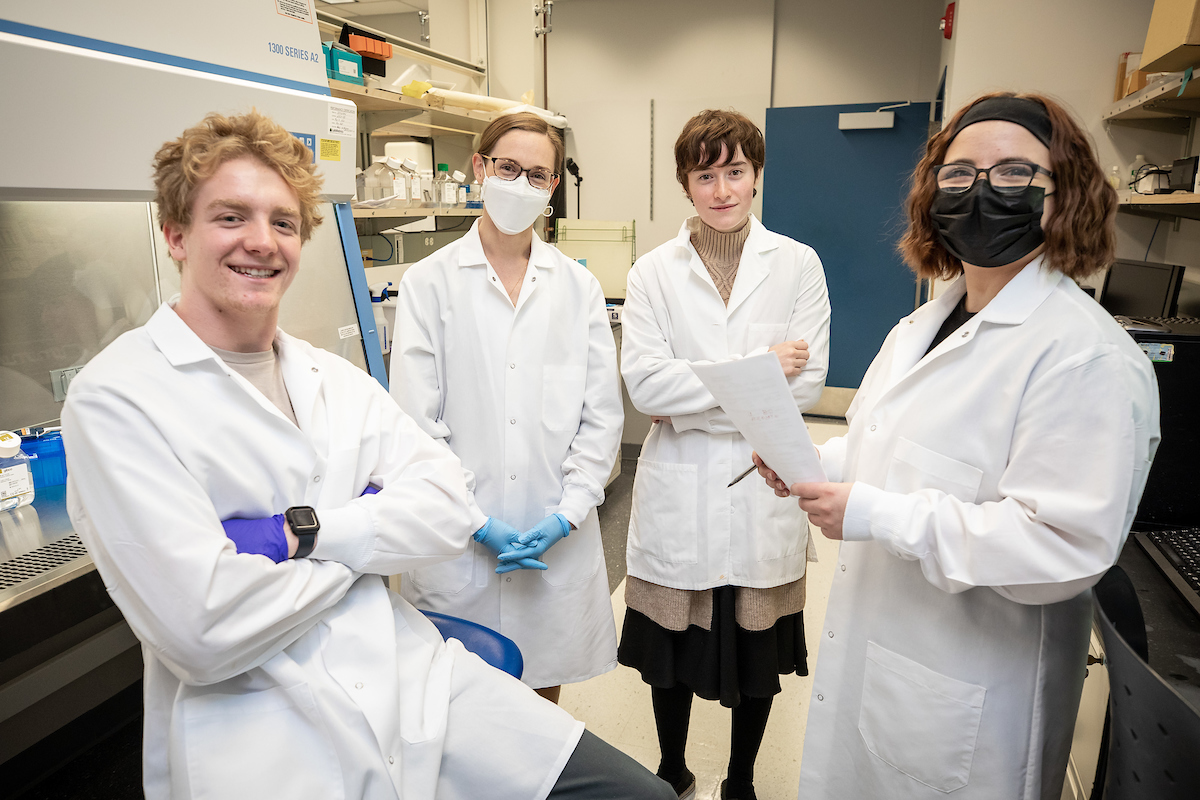 Margaret Bell, an assistant professor of biological and health sciences, researches a group of man-made, organic chemicals and their effect on bodies and brains. (DePaul University/Jeff Carrion)
Margaret Bell, an assistant professor of biological and health sciences, researches a group of man-made, organic chemicals and their effect on bodies and brains. (DePaul University/Jeff Carrion)
We are constantly affected by our surroundings — through what we touch, consume and breathe — even when we are completely unaware of it. While many of these interactions are with naturally occurring materials, humans have added novel compounds to our environment.
Margaret Bell, an assistant professor of biological and health sciences, studies polychlorinated biphenyls (PCBs), a group of industrial organic chemicals. Exposure to PCBs has been linked to reproductive issues, brain disorders, immune dysfunction and some cancers. This fall, Bell earned a $446,000 grant from the National Institutes of Environmental Health Sciences to study effects of PCBs on microglia, a specialized immune cell in the brain. The work is taking place with undergraduate and graduate students on DePaul’s Lincoln Park Campus.
"I am especially excited about this project because the acute isolation technique will allow us to better maintain the local microglial environment unique to developmental stages," Bell says. "We hope the results will inform potential therapeutic and exposure mitigation strategies for specific populations."
 Graduate student Carissa Dressel works with Margaret Bell in the lab. (DePaul University/Jeff Carrion)Hidden contaminants impact the brain
The Bell Lab
Graduate student Carissa Dressel works with Margaret Bell in the lab. (DePaul University/Jeff Carrion)Hidden contaminants impact the brain
The Bell Lab has studied a range of social, reward, and anxiety-related behavior, as well as neurotransmitter and neuroendocrine systems. The NIH-funded work will focus on PCBs, which were commercially manufactured from 1929 until production was banned in 1979 by the Toxic Substances Control Act.
“A challenge with PCBs is their persistence in the environment,” she says. “They can linger in building materials produced before the ban. As those materials break down, PCBs are released as dust. Scientists also have recently realized some are inadvertently produced as byproducts of some industrial processes.”
PCBs concentrate in fatty tissue, so most of us ingest PCBs when we eat fish, meats and dairy products, Bell explains. Infants often are the most highly exposed due to the high healthy fat content in breastmilk and babies’ tendencies to put potentially dusty toys and hands in their mouths. “This is especially unfortunate because young brains and bodies are very vulnerable to contaminants,” Bell says.
During development, the microglia cells in the brain are critical in typical developmental processes, while in adulthood they continue to protect the brain from injury and regulate activity. Disruptions to microglial processes are associated with autism spectrum disorder, attention deficit hyperactivity disorder, mental health disorders, Parkinson's disease and Alzheimer's disease. The team's general hypothesis is that PCBs may alter microglial activity to disrupt brain development and later health.
Bell also believes findings could have broader implications that inform our society’s management of other persistent organic pollutants. These include polybrominated and perfluoroalkyl, or PFAS, substances still in use as flame retardants and surface protectors that are considered the new "forever chemicals."
“There is a call among many environmental toxicologists to regulate PFAS as a class, for the same reasons that PCBs currently are regulated as a class,” Bell says. “Microglial sensitivity to PCBs could indicate the potential for similar disruption by PFAS, emphasizing the need for more consistent regulation.”
 Shawn Kissinger, assistant professor Margaret Bell, Gia Valdez and Carissa Dressel work in the Bell Lab. These DePaul College of Science and Health students work with Bell to study the effects of PCBs on microglia. (DePaul University/Jeff Carrion)Real-world experience in Bell Lab launches student scientists
Shawn Kissinger, assistant professor Margaret Bell, Gia Valdez and Carissa Dressel work in the Bell Lab. These DePaul College of Science and Health students work with Bell to study the effects of PCBs on microglia. (DePaul University/Jeff Carrion)Real-world experience in Bell Lab launches student scientists
Bell integrates student researchers as a central part of her lab and will continue to do so under the NIH grant. Undergraduates and graduate students who work with Bell praise her patience and communication, which has made them feel comfortable as they learn new techniques and research methods.
“Dr. Bell's guidance and the experience in the lab helped me realize my love for research, as well as the connection between research and my community,” says Gia Valdez, an undergraduate student with a double major in neuroscience and psychology who started working in the Bell Lab in April.
“I've been most impressed with the wide range of paradigms we've used to examine environmental contaminates, from examination of PCBs on behavior, to microglia, and neuropeptide response,” Valdez says. “Our lab aims to examine many possible ways environmental contaminants may affect physiology and behavior.”
Carissa Dressel is a graduate student in biology at DePaul, working toward a master’s degree with a concentration in physiology and neurobiology. “Before I started here at DePaul, I knew very little about the neural, immune, and endocrine systems, let alone how closely they work together,” Dressel says. “Now, I am writing a thesis that involves all three of them thanks to Dr. Bell. I have learned so much through this one year. I'm excited to see where my research here takes me.”
DePaul’s College of Science and Health recognizes the importance of diverse perspectives and intentionally fosters student research in addressing particularly challenging scientific problems. “My hope is that students graduate feeling like they can make a unique contribution to the big questions, especially ones that have direct impact on Chicago communities,” Bell says.